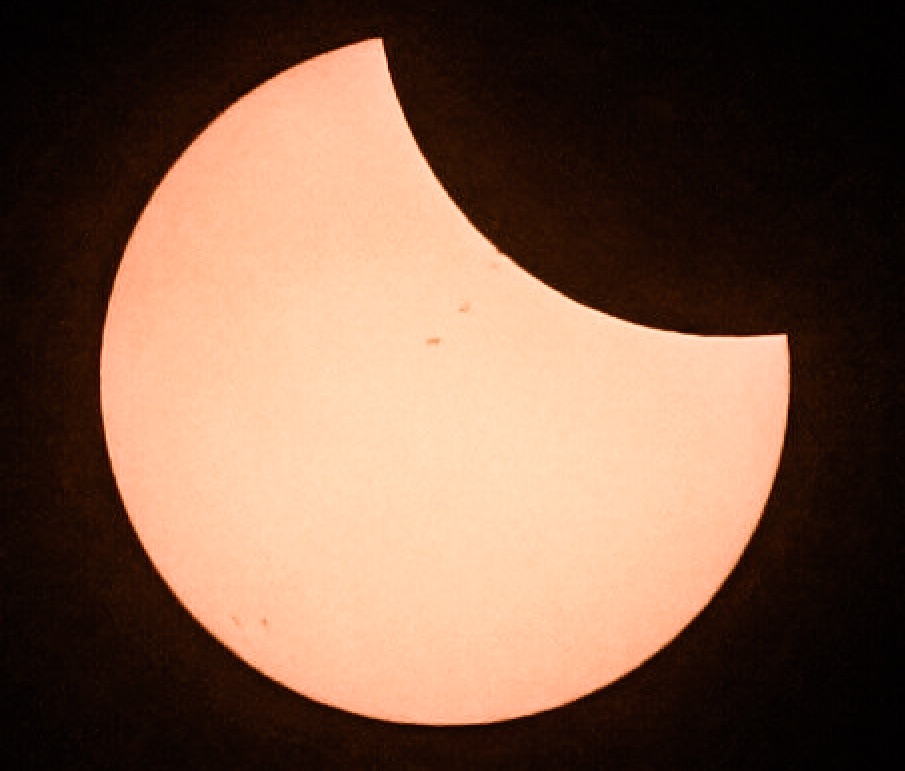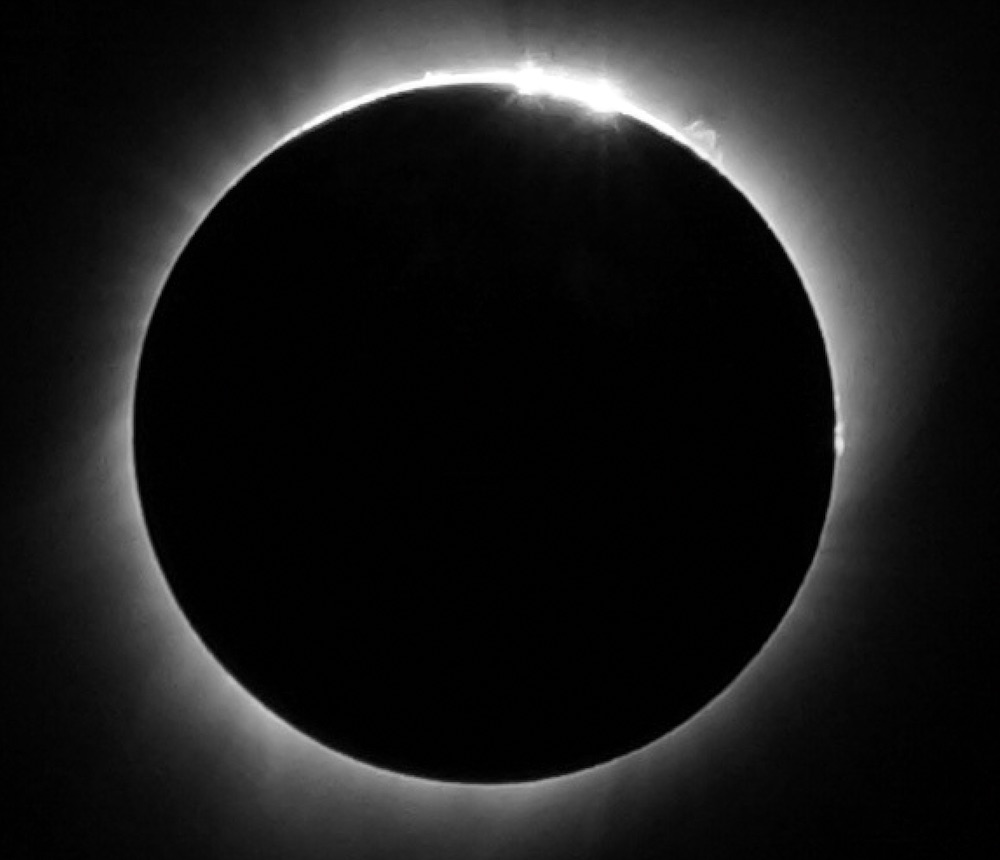Totally Active: Eclipse Photos Reveal Sunspots, Solar Flares

The sun put on quite a show on Aug. 21 — and not just the "total solar eclipse" kind. Photos snapped from the path of totality during the solar eclipse reveal a flurry of activity, ranging from sunspots to solar flares, on Earth's closest star.
The shots were taken by amateur photographer (and this writer's father-in-law) John Mitchell from the path of totality just south of Thermopolis, Wyoming. In the early stage of the partial eclipse, Mitchell captured a series of dark smudges on the face of the sun. These are sunspots, regions of the sun's surface that are cooler than the rest of the surface. According to the Space Weather Prediction Center, a sunspot might hover at a temperature of around 6,200 degrees Fahrenheit (3,430 degrees Celsius), compared with 10,300 degrees F (5,700 degrees C) for the rest of the sun's surface.
Sunspots are transient, but they occur all the time, not just during an eclipse. They are caused by variations in the sun's magnetic field: Where the magnetic field is intense, it actually holds back heat from the interior of the sun. [Photos: The 2017 Great American Solar Eclipse]
The sun's activity waxes and wanes on an 11-year cycle, and the number of sunspots visible on the star's surface depends on timing within this so-called solar cycle. The sun is now near the minimum in its current cycle, which started in 2008. That cycle is Solar Cycle 24, so named because it's the 24th since regular recording of sunspots started, in 1755.
At solar minimum, the sun's magnetic field weakens and sunspots are relatively infrequent. But the lowest point in the current solar cycle is likely still to come, according to NASA. The agency said it expects the lowest count of sunspots to occur sometime between 2019 and 2020.
Solar flares, also captured on camera during the eclipse, likewise decrease in frequency during solar minimums. Nevertheless, in the last moments before the sun disappeared entirely behind the moon on Aug. 21, a solar flare was visible on the upper right quadrant of the sun.
These flares are abrupt eruptions of magnetic energy, accompanied by huge releases of light and solar particles. Some of the particles and electromagnetic energy from large solar flares can interact with Earth's upper atmosphere, according to NASA, and this can disrupt satellite transmissions. Solar flares are associated with sunspots: Think of them as the release valve for all of that pent-up electromagnetic energy that darkens the sun's surface.
Get the world’s most fascinating discoveries delivered straight to your inbox.
According to NASA, solar minimums are notorious for allowing the development of coronal holes. The corona is the sun's atmosphere (viewers of totality during the latest eclipse will remember it as the filaments of white surrounding the blackened sun). Coronal holes are cool spots in this atmosphere from which the solar wind can escape. Solar wind, in turn, is a stream of charged particles that can hit the Earth's upper atmosphere and cause disturbances like auroras, those shimmery bands of color also known as the northern or southern Lights.
Original article on Live Science.

Stephanie Pappas is a contributing writer for Live Science, covering topics ranging from geoscience to archaeology to the human brain and behavior. She was previously a senior writer for Live Science but is now a freelancer based in Denver, Colorado, and regularly contributes to Scientific American and The Monitor, the monthly magazine of the American Psychological Association. Stephanie received a bachelor's degree in psychology from the University of South Carolina and a graduate certificate in science communication from the University of California, Santa Cruz.




